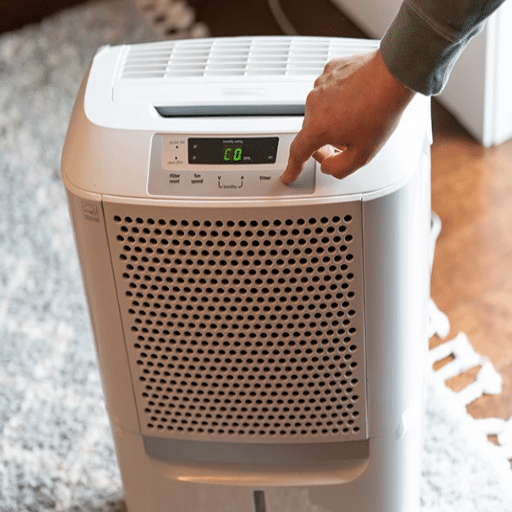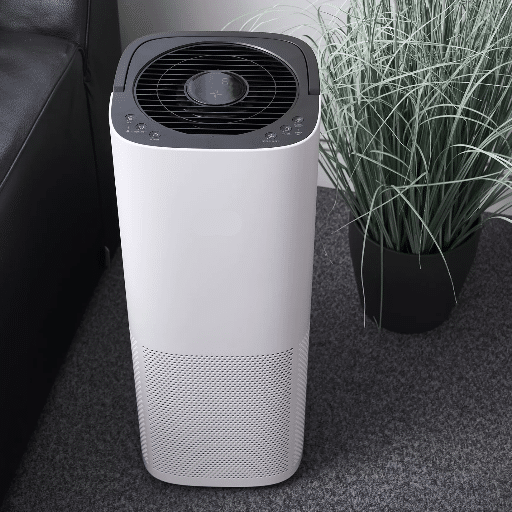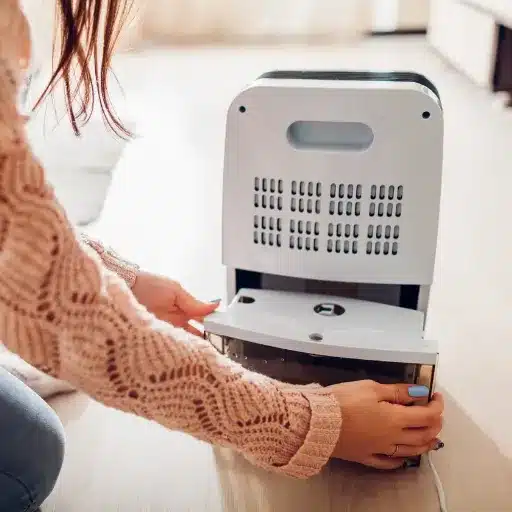The issue basement moisture can pose to the structural integrity of your home is insurmountable. Excess humidity enhances the growth of mold, mildew, and even lousy smell, causing damage to the quality of air in the house. Dehumidifiers serve as great tools for managing excess moisture. Given that the market is flooded with endless options, riding the current wave and picking out a dehumidifier that caters to your requirements can be frustrating. However, tips about different features, energy efficiency ratios, and strengths of a dehumidifier will help you make this crucial decision seamlessly. No matter what your basement looks like, whether small, large, unfinished, or finished – the details above and our informed decision will cater to the tools you require and the space you want it to cover.
What size dehumidifier do I need for my basement?
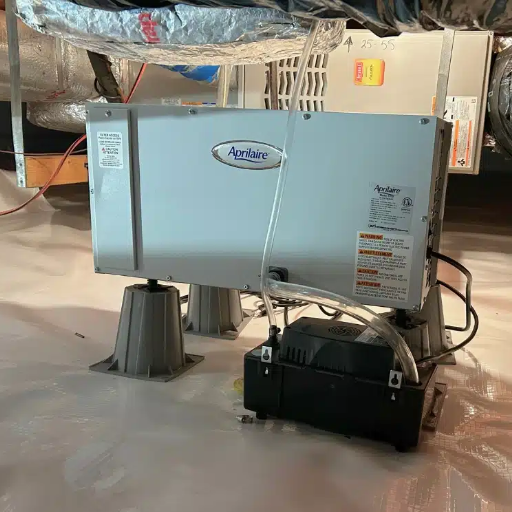
Your basement’s size and moisture levels determine the dehumidifier size needed. For instance, a basement less than 500 square feet with little humidity requires dehumidifiers with 20 to 30 pint per day rates. If the basement is more significant than 1,000 up to 1,500 square feet, a dehumidifier with 50 to 70 pints rating is recommended, especially for humid conditions. You can calculate what type of dehumidifier to buy by measuring your basement and checking for high moisture levels.
Calculating the ideal capacity based on basement size
There are several factors to check before deciding on the type of dehumidifier for your basement, and one of the key factors is its size and the humidity level. A basement with an area of less than 500 square feet and a low humidity level can be managed with a 20 to 30-pint dehumidifier. If increased to 500 to 1000 square feet, a 30 to 50-pint heavy-duty dehumidifier improves efficiency significantly. In very high humidity or over-saturated water levels, efficiency can be maximized with 50 to 70-pint-rated dehumidifiers for spaces over 1000 up to 1500 square feet.
To formulate a comprehensive approach, measure the square footage along with the moisture levels, as mentioned before, flooding. Buying units that can remove a higher pint level is recommended in cases like these. Such a systematic approach guarantees that a consistent and energy-efficient moisture control technique can be applied per the specific conditions in the basement.
Understanding pint ratings: 35-pint vs. 50-pint dehumidifiers
When choosing between a 35-pint and a 50-pint dehumidifier, some essential factors to consider are the size of the room, moisture content, and how severe the humidity issues are. Generally, a 35-pint dehumidifier is recommended for areas above one thousand square feet and with moderate humid conditions. Such an option is energy efficient for mild dampness in rooms such as wet bedrooms, bathrooms, or small basements.
In contrast to a 35-pint option, if the area tends to range from 1000 to 2000 square feet, a 50-pint dehumidifier would be recommended, especially in humid conditions such as soaking basements. Such units are usually preferable as they remove moisture quickly and can be utilized in cyclonic conditions where typical obstacles are present.
Model selection, however, tends to be based on external factors such as one’s home. Both model units are built to provide humidity levels between 30% and 50%, which any healthy individual can function in. For example, the 50-pint model is highly preferred for a space prone to flooding or excessive moisture issues. Furthermore, the 35-pint model works well for smaller and less complex spaces.
Factors affecting dehumidifier size selection
I calculate the appropriate sizing for a dehumidifier by considering the room’s area, the average humidity, and potential moisture damage. High humidity in large areas usually requires 50-pint models, which can extract moisture efficiently. At the same time, 35-pint models will be sufficient for moderate humidity levels in smaller rooms. In addition, higher capacity dehumidifiers are required for places like basements or areas with water leakage susceptible to moisture. Dehumidifier efficiency can also be affected by the location’s climate and overall airflow, which are environmental factors that should be factored in.
How do I choose between portable and whole-house dehumidifiers?
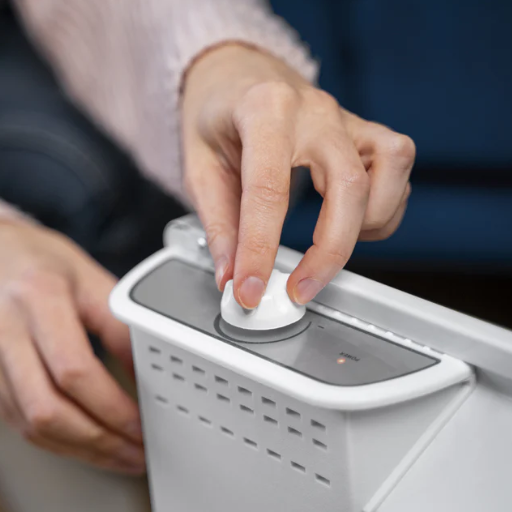
When choosing between a portable and a whole-house dehumidifier, remember the purpose and size of the area that requires dehumidification. Single dehumidifiers are perfect for a single room or small, specific areas as they are typically easy to use and mobile. They’re also inexpensive to buy and easy to care for, but these devices can also have a high water tank requirement. In contrast, a household dehumidifier removes moisture from every building room and is usually built into heating, ventilation, and air conditioning (HVAC) units. They tend to be more expensive and need a professional service to fit them, but they have longer lifespans and require lower maintenance levels. These may be necessary if the specific residence has high humidity levels throughout, say, large mansions. Look at the area measurement, how much you have allocated for expenses, and how hands-on you want to be to pick the best fit.
Pros and cons of portable dehumidifiers for basements
Dehumidifiers can help manage humidity levels in a basement, and portable dehumidifiers are an affordable and highly flexible option. These units are designed to accommodate specific areas that may experience higher humidity and are cheaper than agricultural dehumidifiers. Since they can be set up in smaller areas, dealing with professionals to install and remove them is not required. Water tanks are attached to them and must be removed and cleaned occasionally.
Despite their advantages, portable dehumidifiers have their disadvantages. Their low effectiveness makes them unsuitable for huge basements and other rooms with consistently humid air. They also tend to produce higher noise levels, which can be distracting within day-to-day living areas or nearby rooms. Additionally, while the initial cost of the device is low, other factors, such as regularly adding more water or less energy-efficient models not being cost-effective, may lead to inflated long-term spending figures. Overall, portable units may be optimal for specific humidity control tasks, but large areas of moisture saturation will require a better solution.
When to consider a whole-house dehumidifier system
If you are dealing with high humidity problems in several rooms at once or trying to keep humidity where an entire house is, this is the perfect solution. These systems excel at dealing with too much moisture in a home, thanks to portable units having their limitations in efficiency. To combat the humidity and enhance the indoor air quality of your home, HVAC systems are integrated into the new ones, making breathing around the house a lot easier. If you live in hot weather, feel a musty smell, see too much water on windows, or see too much filth in your house mold, then spending money on these will be a good long-term investment.
Energy efficiency comparisons: portable vs. whole-house units
Whole-house dehumidifiers have an edge over portable units in terms of energy efficiency over an extended period. On the other hand, portable dehumidifiers are built with the functionality to harshly dehumidify the air in certain rooms, which increases the overall energy consumption. Whole-house units, however, can provide comfort across the whole house by being more efficiently integrated with previously installed HVAC systems, thus lowering the overall operating cost. Furthermore, these HVAC systems operate with better controls and larger reservoirs, giving them higher efficiency and reducing depreciation. The initial expenditure of whole-house dehumidifiers is higher than that of their portable counterparts; however, over the long run, one can save money on energy bills and repairs to their HVAC systems, thus increasing their cost-effectiveness. Ultimately, the choice depends on your specific needs, with portable units better suited for localized issues and whole-house systems ideal for comprehensive climate control.
What features should I look for in a basement dehumidifier?
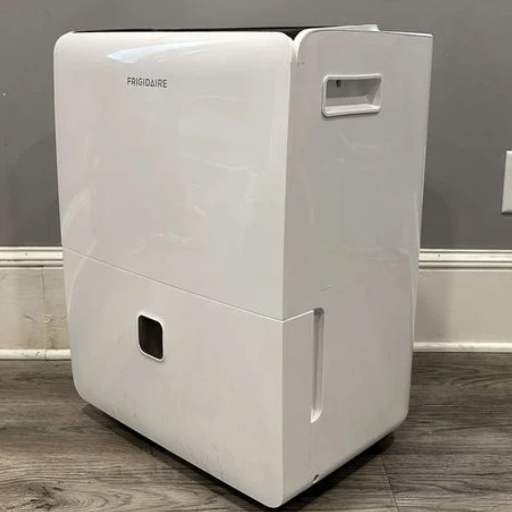
In my opinion, several features are necessary for a basement dehumidifier to be effective. I always start by verifying that its capacity is in pints per day, which is needed, especially for spaces like basements with higher humidity levels. Furthermore, I always look for Energy Star-certified units as they help reduce electricity bills. Options for continuous drainage are crucial to consider as they remove the need to constantly manually empty tanks. Moreover, I prefer models with built-in humidistats for accurate humidity settings and defrosting features for use in colder conditions, like basement settings. Finally, I value quietness during usage, sound filtration, and sturdy construction.
Built-in pump vs. gravity drain options
When comparing a dehumidifier with a built-in pump and a gravity drain, both promote varying advantages depending on your needs and installation parameters. Built-in pumps work the best for cases where water needs to be expelled vertically or over a long distance, such as locations where a floor drain is not present, or the appliance is placed a distance away from a suitable disposal. In areas with complicated drainage systems, this feature helps with placement and aids in time-watching.
On the contrary, gravity drains use the natural flow of water and have been designed to be used above or next to the drain. Most do not fully accept gravity drains, as they are inclined not to maintain comparable prisms, but they are pretty cheap and take considerably less time to operate. They still have some options regarding positioning and proximity to the drainage point.
When selecting between these alternatives, consider the condition and arrangement of the area, the location of the nearest drain, and your preference for how simple or complex the installation will be. Built-in pumps can be versatile in homes where the drainage is complicated, and if the environment allows for straightforward water flow, a gravity drain option is efficient.
Innovative dehumidifiers: benefits and functionality
Innovative dehumidifiers integrate advanced technologies that promote efficiency and ease of use and enhance customer satisfaction. The devices are connected via Wi-Fi and can be remotely controlled over mobile applications. This means that users can modify the settings, monitor humidity levels, and be alerted when the values are too high at any location. The devices include humidity sensors and programs for scheduled activation, which can reduce power consumption and maintain the required settings. Most models are compatible with Amazon Alexa or Google Assistant, which enables control over voice commands. Their operating principle is uncomplicated; therefore, they are comfortable and effective in controlling excess moisture in the air indoors.
Energy Star certification and its importance
Energy Star certification is an endorsement issued to products and devices that satisfy the rules defined by the Environmental Protection Agency (EPA) in the United States. The devices with the certification are manufactured in such a manner that they use less energy than ordinary devices, hence saving on the costs of electricity and enhancing the protection of the environment. For the end users, such low carbon consumption means substantial annual savings on energy bills and significantly decreasing carbon emissions. Also, Energy Star-certified ‘Control dehumidifiers’ are rated for energy efficiency, which adds to significant moisture while ensuring economy during operation. Such a certification ensures that such an appliance saves energy but is robust, which is essential for customers who care about the environment and are looking for long-lasting appliances.
Which dehumidifier is best for small basements or tight spaces?
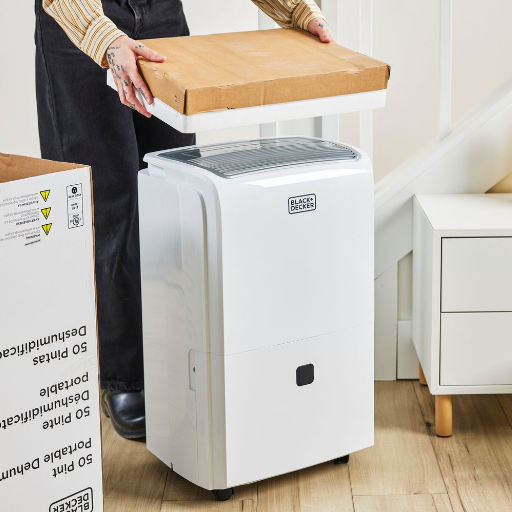
Small portable dehumidifiers are the most appropriate for operating in small buildings like homes. Dehumidifiers like the hOmeLabs Small Space Dehumidifier or the Pro Breeze Electric Mini Dehumidifier will be highly effective because of their compactness and efficiency. These units are designed to remove moisture efficiently in a smaller space. Moreover, the advocates of Energy Star offer functional products that will be perfect for places like small rooms and do not take up a lot of space, making installation a non-issue.
Compact dehumidifiers for limited floor space
Compact dehumidifiers are designed to provide optimal moisture control while occupying minimal space, making them ideal for small rooms, apartments, or offices. The following factors should be considered when selecting a compact dehumidifier:
- Efficiency and Capacity: Look for models suited to the space’s square footage. Units like the Pro Breeze Electric Mini Dehumidifier or the Eva-Dry Wireless Mini Dehumidifier are often recommended for their effective performance in areas up to 220 square feet.
- Portability and Design: Many compact options come with lightweight, portable designs, enhancing usability and convenience. Slim profiles allow these units to be placed discreetly on shelves, counters, or tight corners.
- Energy-Efficient Features: Choosing an Energy Star-certified model ensures reduced power consumption, which is both cost-effective and environmentally friendly.
- Additional Features: Advanced models may include auto shut-off, quiet operation, and reusable desiccant technology, reducing maintenance needs and improving functionality.
Making an informed choice based on these criteria ensures effective humidity control and a healthier living environment without compromising on space constraints.
Desiccant dehumidifiers: a solution for small, cool basements
Desiccant dehumidifiers are best suited for small, cold basements as they are specially made to work in low-temperature regions where typical refrigerant-based dehumidifiers tend to fail. These units employ a desiccant material that extracts moisture from the air, rendering humidity control uninterrupted by temperature fluctuations. Their discrete size, noiseless working, and energy-saving features make them ideal for use in confined spaces, offering a healthy and dry atmosphere in difficult working conditions.
How do I maintain the right humidity level in my basement?
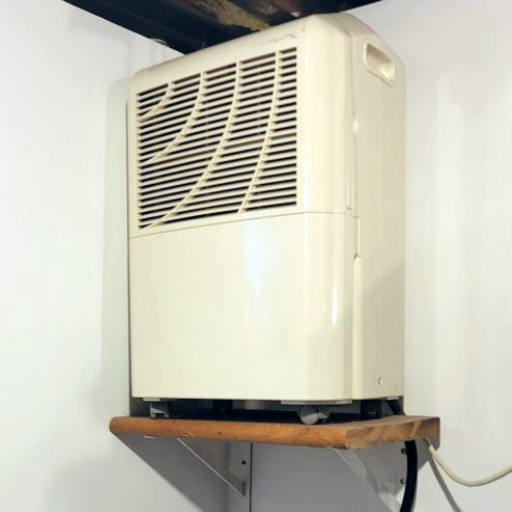
Humidity control in the basement requires constant vegetation monitoring and regulation. So, you can start measuring the relative humidity using a hygrometer and aim for a 30-50% range. A basement dehumidifier should also keep moisture at reasonable levels and restrict mold growth. Good ventilation via exhaust fans or windows around the space is also excellent. Structural modifications such as repairing leaking or cracked walls or floors will also help reduce water intrusion. In addition, insulating cold pipes can help suppress condensation. It is also essential to note that monitoring and regular maintenance are necessary to ensure optimal humidity.
Ideal humidity levels for basements
As mentioned, moisture and humidity issues could take the form of mold and dust mites and should be controlled between the ideal range of 30 and 50 percent. This range will maintain a comfortable zone for the users and safeguard the structure from any harm caused by moisture or excessive heat levels. Condensation on walls and windows during the colder months can be controlled by dropping the humidity ratio to 30 percent. However, the humidity should be lower than 50 percent in summer to avoid intense microbial growth. Regularly using a hygrometer to monitor humidity levels is essential. Where limits are more than ideal, proper treatments like dehumidifiers or sealing the space around windows or walls could be helpful.
Using a dehumidifier with built-in humidistat
A dehumidifier with a built-in humidistat is The most suitable and efficient device for maintaining adequate indoor humidity. In my case, it would be enough to set the desired humidity range and let the unit function automatically—I would put the humidity percentage to somewhere between 30 and 50 percent, depending on the season. This way, it can be ensured that there would be no over-drying or over-humidifying of the space. I would also position the dehumidifier at the center of the room for proper airflow and frequently check its water reservoir to guarantee uninterrupted use. Regular maintenance, such as cleaning filters and looking for blockages, would ensure it works properly for a long time.
Balancing dehumidification in finished vs. unfinished basements
Climate significantly affects indoor conditions; this is especially true for investment spaces, such as finished basements that require a built-in humidistat or dehumidifier. Many such places are insulated, which maintains a consistent humidity level—this equips to achieve an ideal range of 30 to 50 percent. Considering the relative nature of climate, adjustable models that promise a quieter service should be preferred, especially in living areas. In contrast, unfinished basements lack insulation, which exposes them to more significant amounts of external moisture accumulation, making these spaces more humid. For richer moisture environments, a high-capacity dehumidifier is key. Other than the type of basements, ventilation and sealing of any existing cracks can enhance the dehumidification process. Above all, regular maintenance and monitoring are necessary to ensure a coherent experience across both spaces.
What are the top-rated dehumidifiers for large basements?
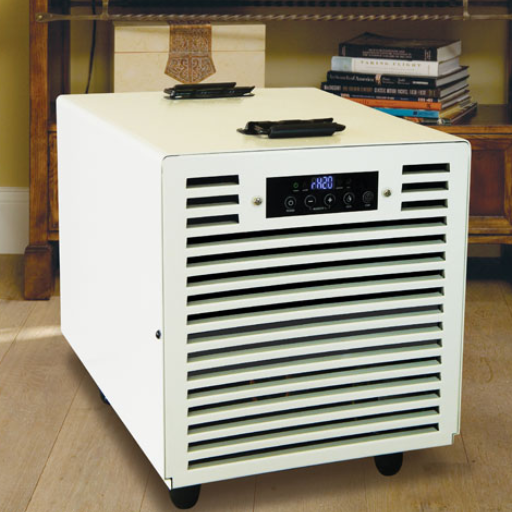
The hOmeLabs 4500 Sq. Ft, Energy Star Dehumidifier, Frigidaire 50-Pint Dehumidifier with Wi-Fi, and Vremi 4500 Sq. Ft Dehumidifiers are some of the best basement dehumidifiers available today. If energy efficiency and moisture removal are what you value the most, then the hOmeLabs model is highly recommended, as it works great for large and wet areas. The Frigidaire model is also great, with advanced features like Wi-Fi, remote monitor, and control access for more practical use, especially for difficult-to-access spaces like basements. Finally, Vremi’s dehumidifier is known for its excellent performance and simple interface, which is helpful in an area with high humidity. Each appliance makes it very easy to have a controlled basement environment, equipped with necessary modern tools, high power, and high capacity.
High-capacity dehumidifiers for expansive spaces
When looking for a large space dehumidifier, I use models that provide durability, moisture removal, and energy efficiency without much compromise. The Frigidaire FFAP5033W1 is praised for its efficiency in air quality enhancement, and the Honey TP70AWKN has innovative features with control access. For high humidity conditions, the Colzer 212 PPD excels in performance on an industrial level. All these appliances are excellent for preventing moisture build-up as they are great for large areas and ensure the desired air quality for an extended period.
Dehumidifiers with continuous drain options for convenience
Adaptability comes in real handy in regards to the moisture extraction models as heavy-duty tanks are not hard to come by, however, I do prefer when the models dehumidifiers have an inbuilt draining system that allows leaves the focus out on the moisture. Take, for instance, the hOmeLabs HME020031N; this model can attach a standard garden hose and provide for moisture buildup through multiple uses at a time. The Vremi 50-Pint Dehumidifier also boasts of a similar robust feature wherein high humidity places also facilitated through extended use, the seamless drainage system takes care of how it all works. The Midea Cube 20 Pint goes a step further by allowing a continuous drain to help, and this is also alongside a stackable design that is easy to use. These models are well suited for air quality maintenance, freeing up any annoying activities.
How can I ensure my basement dehumidifier operates efficiently?
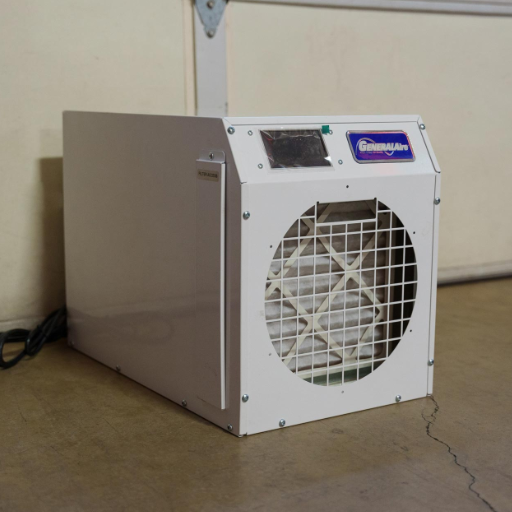
For your basement dehumidifier to function correctly, begin by placing it in an optimally ventilated space and away from any walls or types of obstructions. Make sure to routinely clean the filter to prevent dust or debris buildup – this will improve performance and increase the device’s longevity. Inspect and clean the drainage system regularly, mainly when a continuous drain is used. Set the built-in hygrometer to the desired humidity range, usually between thirty and fifty percent. Lastly, ensure that regular maintenance checks are carried out so you can determine whether all parts are operational and if any worn-out components need replacing.
Proper placement and ventilation tips
Proper usage and ventilation of a basement dehumidifier are essential for optimal performance. A basement dehumidifier should be placed centrally within a room, preferably not too close to furniture, appliances, or walls. A gap between six to twelve inches provides sufficient airflow around the unit, which is necessary for its effective functioning. Avoid placing the dehumidifier in areas prone to dust or close to damp sources, such as laundry machines, unless you eliminate these sources directly when a dehumidifier is used. Close doors and windows to contain indoor moisture. If indoor moisture escapes while the dehumidifier is turned on, it would compromise its ability to function effectively. In the case of a basement with poor ventilation, using a fan would come in handy to allow the air to circulate more evenly around the basement.
Regular maintenance and cleaning procedures
I have some recommendations for the better longevity of your basement dehumidifier. The First step I recommend is to clean or replace the air filter. Depending on how often I use the dehumidifier, I do this every month or once every couple of months. Cleaning or replacing the air filter ensures that the device has proper airflow and high efficiency. Another step I follow is to empty and clean the water collection tank regularly. I use mild soap and warm water to thoroughly clean the tank and remove any chance of mold or bacterial growth. Moreover, I make it a point to check the unit’s coils for any dust or debris build-up and use a soft cloth to wipe them as needed to ensure that heat exchange is efficient.
Furthermore, I consider checking the intake and exhaust grills while ensuring I properly clean them to avoid clogs, which would decrease the device’s airflow. Finally, depending on whether I use a tank or a continuous hose, I check the drainage system for leaks or blockages. These steps have helped me increase and ensure optimal long-term dehumidifier performance.
Maximizing energy efficiency with timer and auto-shutoff features
Utilizing the timer and auto-shutoff features is one of my place’s best energy efficiency measures. I can set devices to operate only when needed, thus avoiding any unnecessary waste from being in standby mode. For instance, setting a timer on heating or cooling systems ensures that they function only during specific periods and do not have to run when the rooms are empty so that people do not have to use unnecessary energy. In the same manner, appliances such as coffee makers or lights have auto shutoff features that disable them after a certain period, helping cut back on costs and being more environmentally conscious. These smart devices allow energy use inefficiency and make one’s life greener.
References
Frequently Asked Questions (FAQ)
Q: What is the best dehumidifier for a basement?
A: The best dehumidifier for a basement depends on various factors, including the size of your space and specific needs. However, a 50-pint dehumidifier is often considered the best overall choice for most basements. It can effectively remove moisture from the air in large spaces, and many models come with features like a drain hose option and Energy Star certification.
Q: How do I choose the best dehumidifier for my basement?
A: To find the best dehumidifier for your basement, consider the following factors: the size of your space, the level of dampness, energy efficiency (look for Energy Star certification), and additional features like a pump or innovative capabilities. A 50-pint dehumidifier is usually recommended for more extensive or very damp basements, while a 35-pint dehumidifier might suffice for smaller or less humid spaces.
Q: What are the advantages of a dehumidifier with a pump?
A: A dehumidifier with a pump offers several benefits, especially for basement use. It can automatically pump water upwards to a sink or out a window, eliminating the need for manual emptying. This is particularly useful if you don’t have a floor drain nearby. Many Energy Star dehumidifiers with pumps are available, combining efficiency with convenience.
Q: What is the best budget dehumidifier for a basement?
A: The best budget dehumidifier for a basement will depend on your specific needs, but look for a model with good moisture removal capacity at a lower price point. Some affordable 35-pint dehumidifiers can be effective for smaller basements or less damp conditions. While they may lack some features of premium models, they can still effectively remove moisture from the air.
Q: How does a 50-pint dehumidifier compare to a 35-pint model?
A: A 50-pint dehumidifier can remove more moisture from the air daily compared to a 35-pint model. The 50-pint version is better suited for larger spaces or very damp conditions, while a 35-pint dehumidifier is typically sufficient for smaller basements or areas with less humidity. Both types are available as Energy Star dehumidifiers, but the 50-pint models are generally more efficient for larger spaces.
Q: What features should I look for in the best ingenious dehumidifier?
A: The best innovative dehumidifiers offer Wi-Fi connectivity, smartphone app control, voice assistant compatibility, and real-time humidity monitoring. Look for models that allow you to adjust settings remotely, receive alerts when the tank is complete, and integrate with your smart home ecosystem. Some innovative dehumidifiers also provide energy usage data to help you optimize efficiency.
Q: How do I use a drain hose with my dehumidifier?
A: To use a drain hose with your dehumidifier, first locate the drain port on your unit. Attach the drain hose (often, a standard garden hose will work) securely to this port. Position the other end of the hose in a suitable drainage area, such as a floor drain or utility sink. Ensure the hose runs downhill from the dehumidifier for proper gravity drainage. If your model has a pump, you can direct the hose upwards or to a distant drainage point.
Q: What’s the best dehumidifier for a basement bedroom?
A: For a basement bedroom, consider a quiet, efficient model that won’t disturb sleep. Look for an Energy Star portable dehumidifier with a capacity suitable for your room size. A 35-pint dehumidifier might be sufficient for most basement bedrooms. Features like auto-shutoff, programmable timers, and low-noise operation are particularly beneficial for bedroom use.
Q: How do Energy Star dehumidifiers compare to non-certified models?
A: Energy Star dehumidifiers are more energy-efficient than non-certified models, potentially saving you money on electricity bills. They remove the same amount of moisture from the air as standard dehumidifiers but use less energy. This makes them a more environmentally friendly choice and often a more cost-effective option in the long run, especially for basement use where the dehumidifier may run frequently.
Q: What type of dehumidifier is best for small spaces in a basement?
A: For small basement spaces, consider a compact or mini dehumidifier. These units, often called “cube dehumidifiers,” are designed for areas up to 150-250 square feet. While they have a lower capacity than full-sized models, they can effectively remove moisture in small, enclosed spaces like closets, crawl spaces, or small finished basement areas. Look for features like auto-shutoff and quiet operation for convenience in these smaller spaces.

